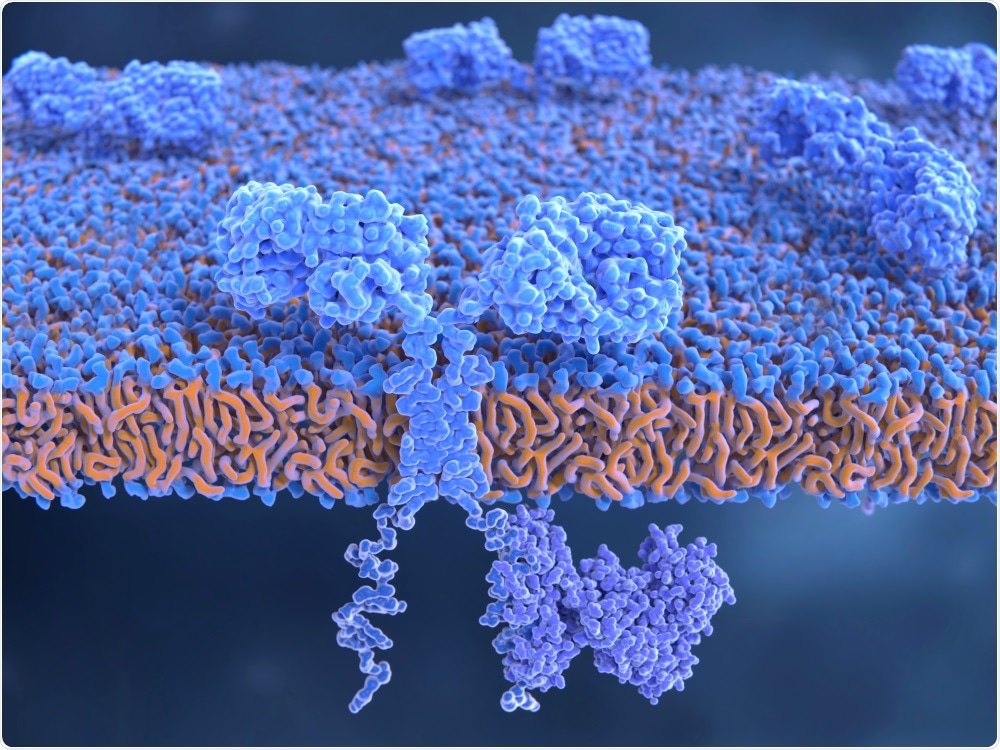Scientists at the University of Pennsylvania’s Abramson Cancer Center have used CAR-T cells to treat cardiac fibrosis, a key part of heart disease and cardiac arrest. The novel study, which was recently published in Nature, explains how the T cell therapy has been successfully implemented to target and destroy the scar tissue that ultimately leads to heart failure.
 Juan Gaertner | Shutterstock
Juan Gaertner | Shutterstock
A cutting edge cancer treatment
In 2017, Pen State researchers developed a revolutionary new cancer treatment which was able to target and destroy malignant cells in the body through the use of engineered white blood cells (T cells).
The therapy is now widely known as chimeric antigen receptor T-cell (CAR-T), and has since been used to provide personalized cell-based therapy for patients with acute lymphocytic leukemia and adults with non-Hodgkin lymphoma.
Now, researchers at the same institution have uncovered strong evidence suggesting that CAR-T cells could be used for the prevention of various forms of cardiac disease and heart failure.
It is thought that the breakthrough will disrupt the world of heart disease treatment.
Targeting fibrosis with CAR-T cells
Almost all forms of heart disease present fibrosis. When injured, the heart’s cardiac fibroblasts deposit excess extracellular matrix to remodel the damaged myocardium, and this leads to stiffening of the heart. With heart disease accounting for one in four deaths in the US, it’s crucial that a reliable treatment for fibrosis is made available. However, interventions and therapies that target fibrosis are limited.
The new study provides new hope for a viable treatment option for fibrosis, which has the potential to save the lives of millions.
When treating cancer, CAR-T therapy functions by infusing T cells, that have been extracted from the patient and injected with a chimeric antigen receptor (CAR), back into the patient’s bloodstream in order to target and destroy cancer cells. The amended T cells target the specific antigens expressed in cancer cells due to the inserted CAR that is expressed on the surface of the T cell.
Researchers were able to amend this therapy in order to recognize and attack the fibroblasts present in heart disease by first determining the specific protein which is associated with the scarring process.
By analyzing gene expression patterns in heart disease patients, the research team were able to establish their target as the fibroblast activation protein (FAP). Following this, the researchers were able to alter the CAR-T cells to target FAP, and their study showed a reduction of cardiac fibrosis and improvements in heart functioning in mice.
What does this mean for humans?
With heart disease remaining a leading cause of death in men and women in the US, and no real viable treatments for reversing heart damage available, if the results of Penns studies could progress to be replicated in humans, the impact on healthcare would be huge.
Other groups are looking to other potential therapeutic opportunities, with teams at University of Washington and the University of Cambridge developing methods to repair heart damage using stem cells, and scientists at Renovacor are investigating the potential of fighting heart disease with gene-based strategies.
However, these therapies are only just starting to be investigated, and it is clear that there is a pressing demand for therapeutic option to be available now.
The future for CAR-T as a heart disease treatment
Could CAR-T be available for treating heart disease in humans in the near future? The outlook, unfortunately, is unclear. While the capabilities of using CAR-T for heart disease has been proven in mice, establishing the same treatment to be effective in humans could take years of development.
The therapy is also very expensive, with a $450,000 price tag per patient for its use in cancer treatment. In addition, the numerous severe side effects such as fevers and confusion or seizures must first be overcome before CAR-T for heart disease can be made widely available.
The bottom line is, while the findings are revolutionary and certainly point to a new cutting-edge therapy for heart disease, much more development is needed and this may take several years.
Journal reference:
Aghajanian, H., et al. (2019). Targeting cardiac fibrosis with engineered T cells. Nature. https://www.nature.com/articles/s41586-019-1546-z